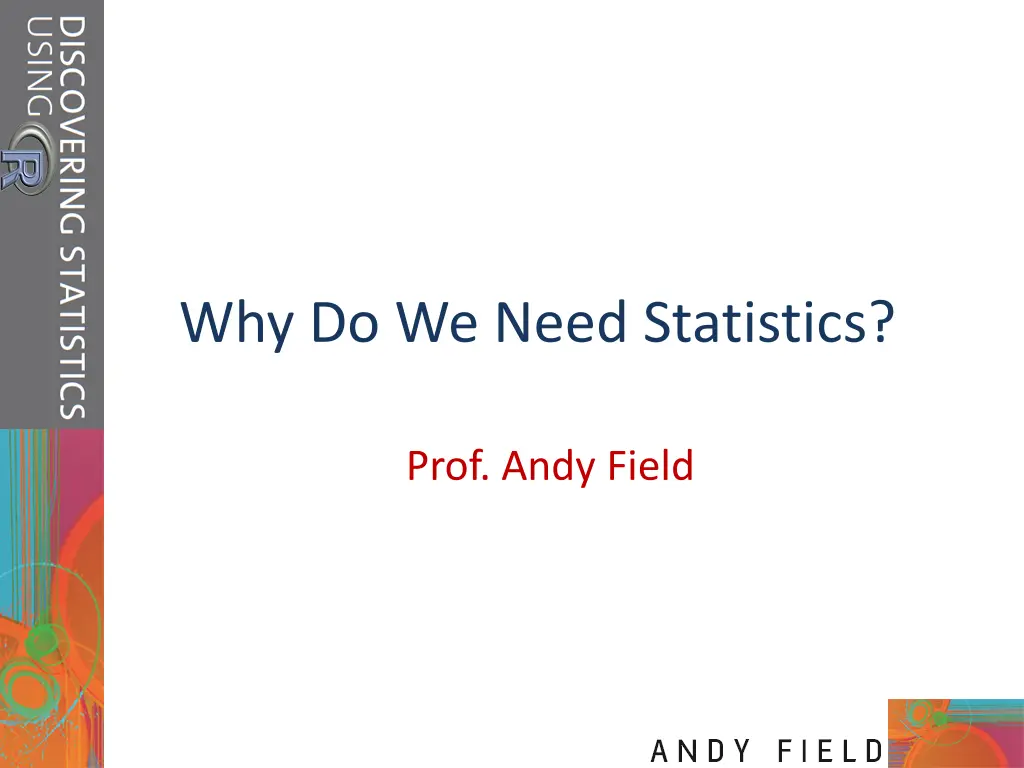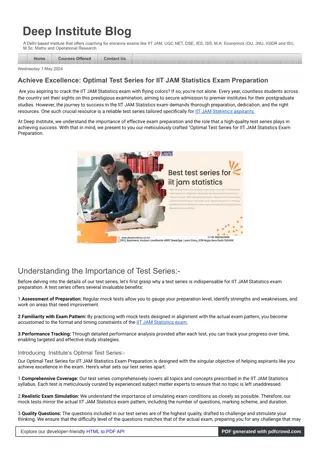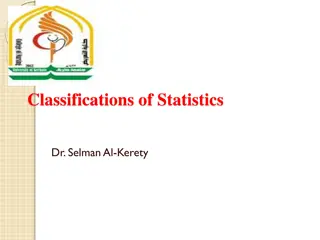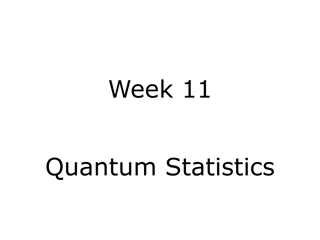
Understanding the Importance of Statistics
Explore the significance of statistics in research, from data analysis to generating and testing theories. Learn about the research process, data collection methods, and the levels of measurement. Delve into topics such as types of data analysis, hypothesis testing, and theory generation. Gain insights into how statistics help in making sense of the world around us.
Download Presentation

Please find below an Image/Link to download the presentation.
The content on the website is provided AS IS for your information and personal use only. It may not be sold, licensed, or shared on other websites without obtaining consent from the author. If you encounter any issues during the download, it is possible that the publisher has removed the file from their server.
You are allowed to download the files provided on this website for personal or commercial use, subject to the condition that they are used lawfully. All files are the property of their respective owners.
The content on the website is provided AS IS for your information and personal use only. It may not be sold, licensed, or shared on other websites without obtaining consent from the author.
E N D
Presentation Transcript
Why Do We Need Statistics? Prof. Andy Field
Types of Data Analysis Quantitative Methods Testing theories using numbers Qualitative Methods Testing theories using language Magazine articles/Interviews Conversations Newspapers Media broadcasts
Initial Observation Find something that needs explaining Observe the real world Read other research Test the concept: collect data Collect data to see whether your hunch is correct To do this you need to define variables Anything that can be measured and can differ across entities or time.
Generating and Testing Theories Theory A hypothesized general principle or set of principles that explains known findings about a topic and from which new hypotheses can be generated. Hypothesis A prediction from a theory. E.g. the number of people turning up for a Big Brother audition that have narcissistic personality disorder will be higher than the general level (1%) in the population. Falsification The act of disproving a theory or hypothesis.
Data Collection 1: What to Measure? Hypothesis: Coca-Cola kills sperm. Independent Variable The proposed cause A predictor variable A manipulated variable (in experiments) Coca-Cola in the hypothesis above Dependent Variable The proposed effect An outcome variable Measured not manipulated (in experiments) Sperm in the hypothesis above
Levels of Measurement Categorical (entities are divided into distinct categories): Binary variable: There are only two categories e.g. dead or alive. Nominal variable: There are more than two categories e.g. whether someone is an omnivore, vegetarian, vegan, or fruitarian. Ordinal variable: The same as a nominal variable but the categories have a logical order e.g. whether people got a fail, a pass, a merit or a distinction in their exam. Continuous (entities get a distinct score): Interval variable: Equal intervals on the variable represent equal differences in the property being measured e.g. the difference between 6 and 8 is equivalent to the difference between 13 and 15. Ratio variable: The same as an interval variable, but the ratios of scores on the scale must also make sense e.g. a score of 16 on an anxiety scale means that the person is, in reality, twice as anxious as someone scoring 8.
Measurement Error Measurement error The discrepancy between the actual value we re trying to measure, and the number we use to represent that value. Example: You (in reality) weigh 80 kg. You stand on your bathroom scales and they say 83 kg. The measurement error is 3 kg.
Validity Whether an instrument measures what it set out to measure. Content validity Evidence that the content of a test corresponds to the content of the construct it was designed to cover Ecological validity Evidence that the results of a study, experiment or test can be applied, and allow inferences, to real- world conditions.
Reliability Reliability The ability of the measure to produce the same results under the same conditions. Test Retest Reliability The ability of a measure to produce consistent results when the same entities are tested at two different points in time.
Data Collection 2: How to Measure Correlational research: Observing what naturally goes on in the world without directly interfering with it. Cross-sectional research: This term implies that data come from people at different age points, with different people representing each age point. Experimental research: One or more variable is systematically manipulated to see their effect (alone or in combination) on an outcome variable. Statements can be made about cause and effect.
Experimental Research Methods Cause and Effect (Hume, 1748) 1. Cause and effect must occur close together in time (contiguity). 2. The cause must occur before an effect does. 3. The effect should never occur without the presence of the cause. Confounding variables: the Tertium Quid A variable (that we may or may not have measured) other than the predictor variables that potentially affects an outcome variable. E.g. the relationship between breast implants and suicide is confounded by self-esteem. Ruling out confounds (Mill, 1865) An effect should be present when the cause is present and that when the cause is absent the effect should be absent also. Control conditions: the cause is absent.
Methods of Data Collection Between-group/between- subject/independent Different entities in experimental conditions Repeated-measures (within-subject) The same entities take part in all experimental conditions. Economical Practice effects Fatigue
Types of Variation Systematic Variation Differences in performance created by a specific experimental manipulation. Unsystematic Variation Differences in performance created by unknown factors. Age, gender, IQ, time of day, measurement error, etc. Randomization Minimizes unsystematic variation.
Analysing Data: Histograms Frequency Distributions (aka Histograms) A graph plotting values of observations on the horizontal axis, with a bar showing how many times each value occurred in the data set. The Normal Distribution Bell-shaped Symmetrical around the centre
Properties of Frequency Distributions Skew The symmetry of the distribution. Positive skew (scores bunched at low values with the tail pointing to high values). Negative skew (scores bunched at high values with the tail pointing to low values). Kurtosis The heaviness of the tails. Leptokurtic = heavy tails. Platykurtic = light tails.
Central tendency: The Mode Mode The most frequent score Bimodal Having two modes Multimodal Having several modes
Central Tendency: The Median Median The middle score when scores are ordered. Example Number of friends of 11 Facebook users.
Central Tendency: The Mean Mean The sum of scores divided by the number of scores. Number of friends of 11 Facebook users. = n ix n i = 1 X n = i = 40 + + + 93 + 98 + 103 + 108 + 116 + 121 + 252 + 22 53 57 ix 1 = 1063 n ix n 1063 11 i = = = = 96.64 1 X
The Dispersion: Range The Range The smallest score subtracted from the largest Example Number of friends of 11 Facebook users. 22, 40, 53, 57, 93, 98, 103, 108, 116, 121, 252 Range = 252 22 = 230 Very biased by outliers
The Dispersion: The Interquartile range Quartiles The three values that split the sorted data into four equal parts. Second quartile = median. Lower quartile = median of lower half of the data. Upper quartile = median of upper half of the data.
Going beyond the data: z-scores z-scores Standardising a score with respect to the other scores in the group. Expresses a score in terms of how many standard deviations it is away from the mean. The distribution of z-scores has a mean of 0 and SD = 1. X X = z s
Properties of z-scores 1.96 cuts off the top 2.5% of the distribution. 1.96 cuts off the bottom 2.5% of the distribution. As such, 95% of z-scores lie between 1.96 and 1.96. 99% of z-scores lie between 2.58 and 2.58. 99.9% of them lie between 3.29 and 3.29.
Types of Hypotheses Null hypothesis, H0 There is no effect. E.g. Big Brother contestants and members of the public will not differ in their scores on personality disorder questionnaires The alternative hypothesis, H1 Aka the experimental hypothesis E.g. Big Brother contestants will score higher on personality disorder questionnaires than members of the public






















